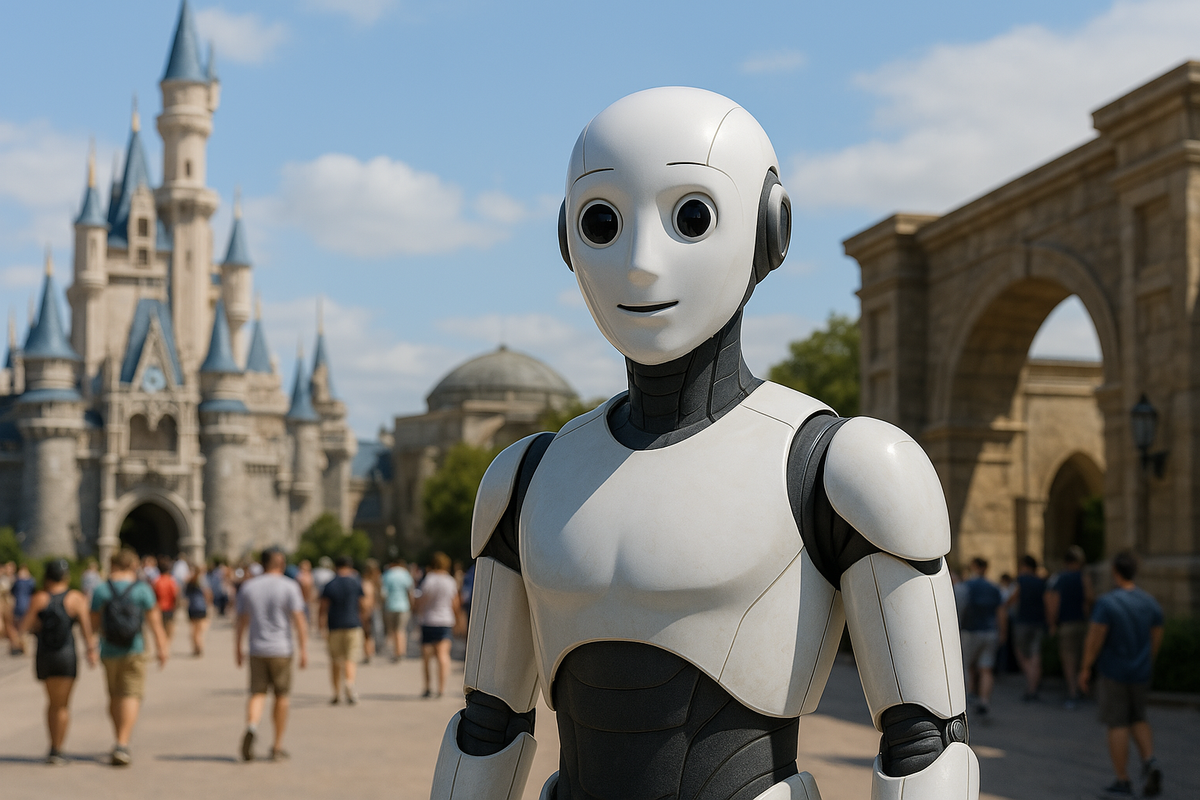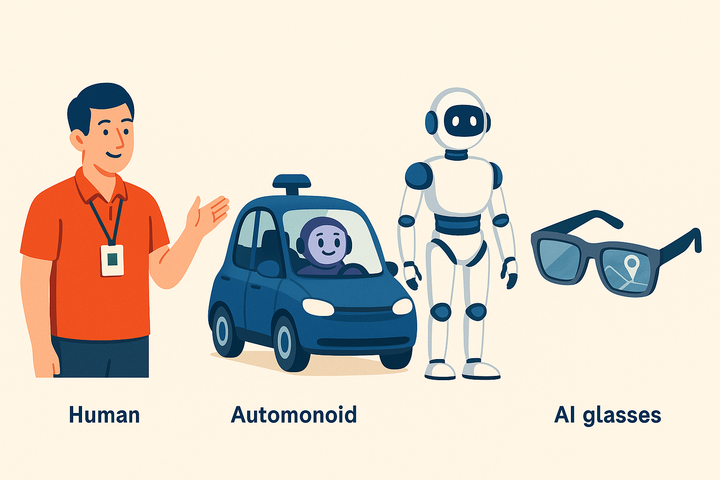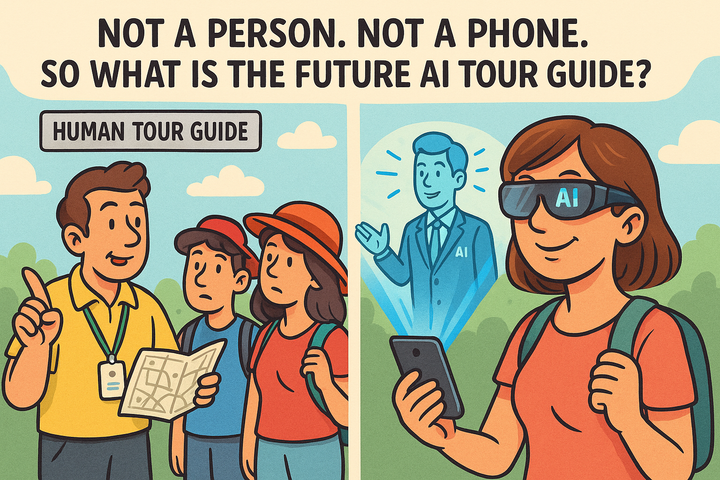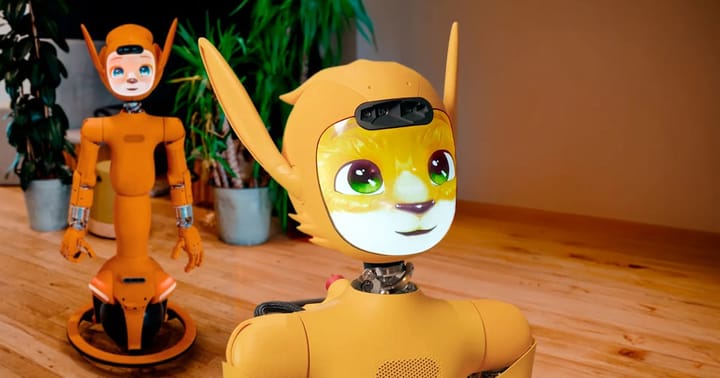Is 2025 the year we start talking about humanoid robots in tours and attractions?
While AI tour guides are still mostly app-based, the tech world is evolving fast. Could 2025 be the year we start seriously considering humanoid robots as part of the visitor experience?

Today, when we talk about AI in the tourism experience, we tend to focus on mobile apps—sometimes paired with smart glasses or holograms. But there’s one technology that rarely enters the conversation: humanoid robots.
As we step further into 2025, maybe it’s time to ask—are we ready to bring robots into tours, attractions, and even treat them as our travel companions?
A TED talk and a theme park
In the same week Universal announced plans for a major new theme park in the UK, TED introduced the world to Neo, a humanoid robot from Norwegian robotics company 1X:
Worth a watch (15 minutes) as you would expect with a TED talk, it's well explained.
This wasn’t science fiction—it was a working prototype of a bipedal assistant designed to help around the home, workplace, or hotel. The timing felt serendipitous. With Universal and others looking to redefine the future of entertainment, the idea of robots becoming part of the travel and attraction landscape suddenly feels very real.
Three assumptions are forming:
- People will have robots in their homes—companions that become part of the family over time.
- Businesses will begin adopting humanoid robots in restaurants and hotels, where friendliness is programmable.
- The logical next step? Robots joining us on our travels—guiding us through tours, theme parks, and cultural attractions.
Imagine Miss Moneypenny as a robot guide
Universal’s upcoming UK park is rumoured to feature brands like James Bond, Paddington Bear, and The Lord of the Rings. Now imagine you’re greeted by a robot Miss Moneypenny who remembers your name, your preferences, and what you saw yesterday.
Would that be charming? Or a bit too much?
Either way, it’s not something a human tour guide can easily replicate. And that’s the point—robots won’t replace human guides, but they’ll offer a different kind of experience. One that’s consistent, adaptive, and multilingual. It won’t be for everyone, but there will be a market.
Robot dogs, Disney droids, and touring with James May
Robots are already finding their way into the attraction world:
At Universal Epic Universe in Orlando, robot baby dragons patrol the grounds:
Disney is prototyping dynamic robotic characters and acrobatic stunts: (See after minute 4, where they show Disney's robots, but the earlier overview in the video is worth a watch if you have time)
Even James May, TV presenter, has toured with a robot guide (5 years ago):
These examples aren’t experiments—they’re signals. Robotics is coming to the visitor economy, piece by piece.
The Robot of Theseus: do you bring your own robot or just the brain?
Let’s imagine robots do become part of our travel lives. Will people bring their own physical robots with them on trips? Or simply hire a compatible robot at the destination, then upload their own data, preferences, and personality?
It’s a modern twist on the Ship of Theseus: if your robot changes its body with every stop, but keeps the same "mind"—is it still your robot?
We may soon travel with nothing more than a login. A familiar voice and face greets you at the hotel, even if the shell is brand new.
And what about within a tour? Could your “robot brain” transfer between bodies—one for walking, one for wheeling, one for posing in group photos? It’s possible, and the flexibility could reshape how we think about companionship on the move.
Do robots need full bodies or just a head?
There’s also a practical question of form. Do we actually need robots to be humanoid from head to toe?
In many cases, maybe a robotic head on a lightweight base is enough. If the goal is emotional connection, facial expression, and conversation—mobility might not be necessary. But in high-touch, interactive environments like theme parks, having a full-body character could still matter for presence and immersion.
The design of these machines will signal their purpose:
- Humanoid form suggests "companion"
- A mounted screen or head suggests "interface"
Experience designers will have to choose wisely.
If robots are everywhere, what’s the actual experience?
Here’s the bigger, longer-term question: if robots become standard, will they still feel like part of the magic?
Not really. Just as “a waiter” is no longer an experience, the presence of a robot might soon be considered normal—expected, even. The novelty fades. So, what’s left?
The robot becomes the glue, not the star. The experience still needs to be compelling in its own right—emotional, creative, memorable. If a robot delivers it well, fantastic. But the robot isn’t the thing. The thing is still the story, the moment, the feeling.
Experience design just got more complex
As robots move from novelty to norm, designing great experiences around them will require even more imagination.
The big question isn’t “when will we have robot tour guides?” - it’s “what will we ask them to do?”
Want to read more like this?
Low volume. Short length. Focused content.
We know you're busy — only the good stuff, no noise.



